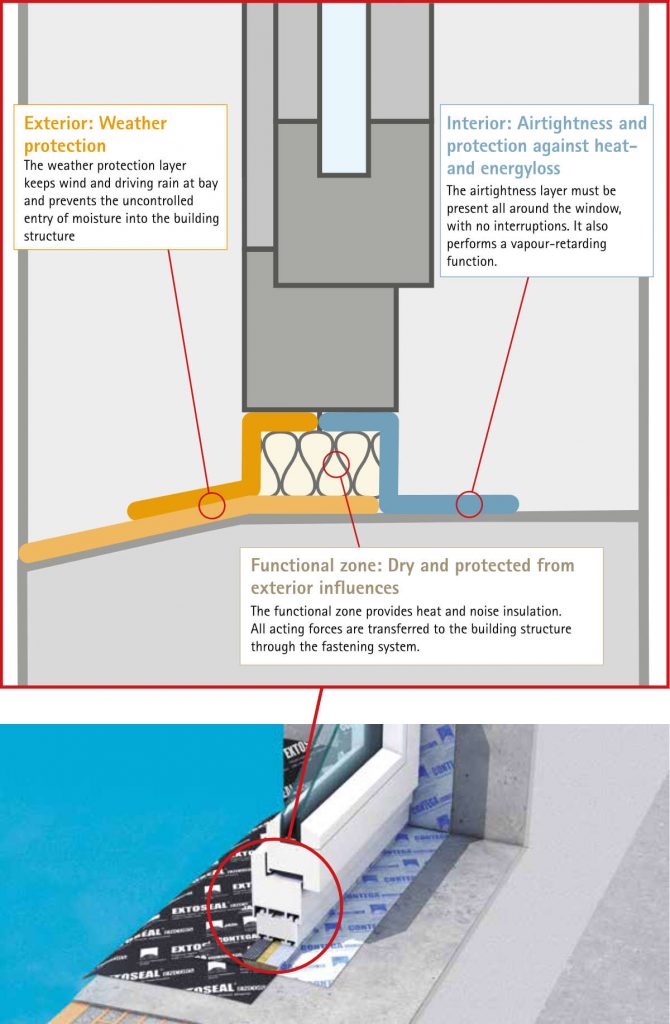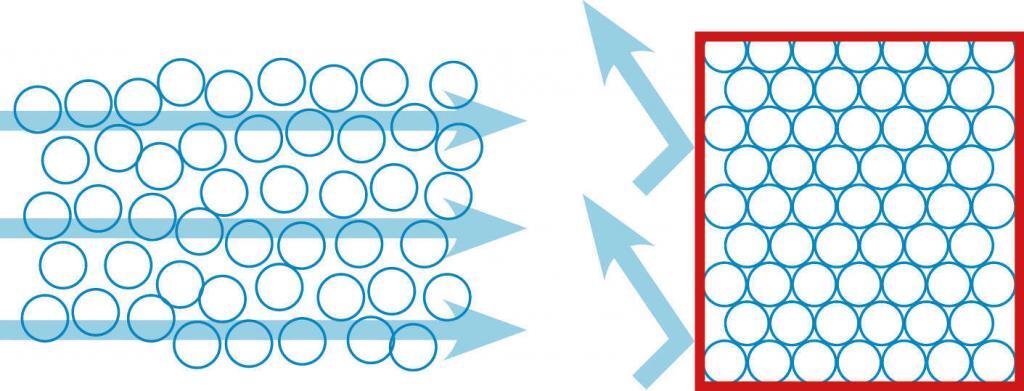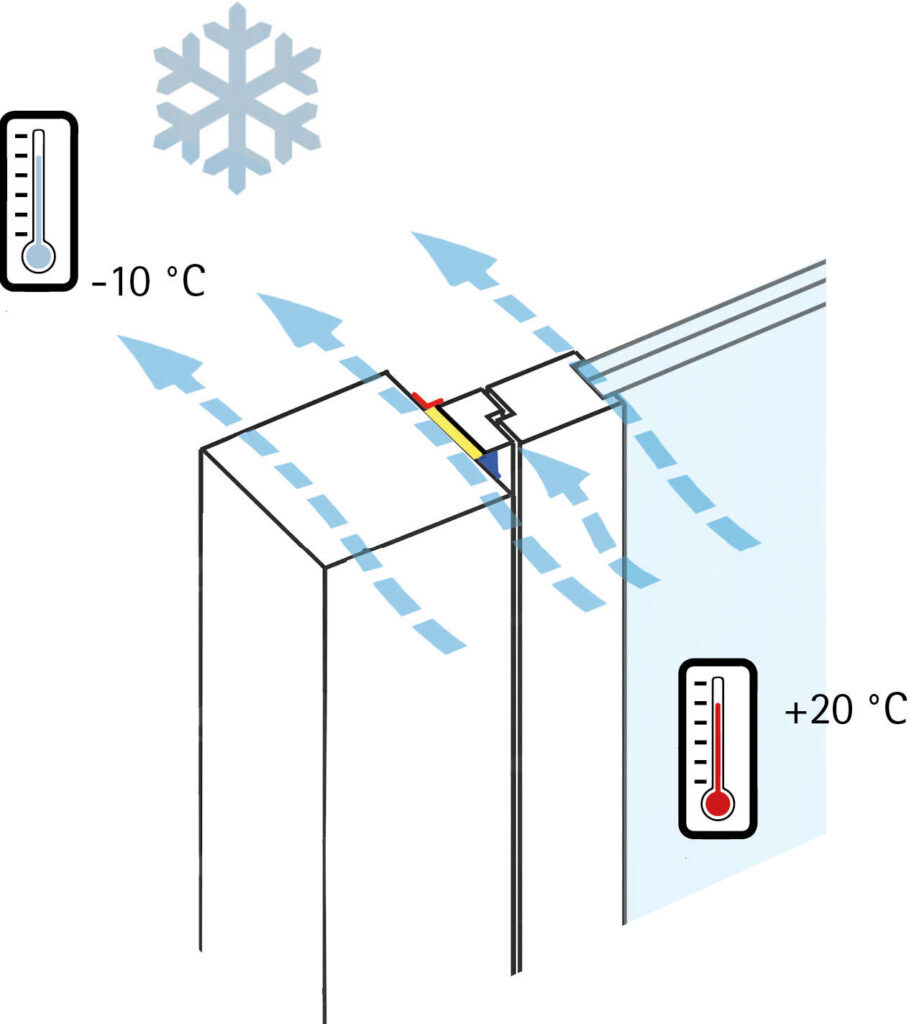Joints to other building components are always challenging: they are just a few millimetres in width, but have to offer the same performance as an exterior wall with a thickness of 40 centimetres. Alongside the external influences that act on a building component, there are also laws and standards that stipulate requirements that joints have to fulfil. The wishes of clients or investors are additional considerations that have to be taken into account. The quality and performance of window joints are dependent on good planning, installation according to the three-layer principle, and the choice of materials used.
Careful installation is important in order to ensure the performance of the building envelope and to avoid structural damage and mould. The design principle of three functional layers must be taken into account during planning and installation
The design principle – The joint is what counts!

The logic behind the three functional layers
1. Functional zone: Joint insulation
Joints have to be completely filled with an approved insulation material. The joint insulation provides not only thermal insulation, but also noise protection too. However, only a sealed and fully insulated joint can fulfil these protective functions. The performance of the joint plays an important role in determining the quality of the overall building envelope. The joint acts as a thin separation between the interior and exterior environments, and it must be protected against the elements and remain dry. If the quality of the joint and the joint insulation is neglected, cold interior surfaces could result, which in turn lead to structural damage and mould.

2. Interior: Airtightness
A fact that has been taken for granted for many years now for roofs and exterior walls also applies to window joints: insulation can only work properly if it is protected by an airtightness layer.
The overall pressure difference between the indoor and external climates attempts to balance itself out. This is mostly easily achieved by means of air currents. In wintertime, this leads to warm air flowing out. The airtightness layer prevents this flow – i.e. convection – and reduces energy losses in this way.
If the joint is not protected on the inside, warm indoor air can flow through the insulated window joint in an unhindered manner. This leads to energy losses, and the risk of condensation water in the insulated joint and on the exterior surface increases. The formation of condensation both inside and outside the structure can lead to significant structural damage and to mould that is harmful to human health. An airtight joint at the window joint helps to avoid this type of structural damage as well as risks to human health.

3. Exterior: Weather protection
Windtightness and sealing against driving rain are also crucial components of ideal insulation and protection against the entry of rain from the outside. Windtightness prevents the flow of cold outdoor air through the joint insulation; rain protection prevents the entry of rain into the structure and/or joint. The entry of rain from the outside into or through the building structure can lead to failure of this structure or to mould formation. Windtightness ensures the effectiveness of the insulation and prevents local cooling on interior surfaces. Ideally, this layer should be more open to diffusion than the airtightness layer. In this way, any moisture that has entered or any condensation that has formed during wintertime can dry out in the summer. A carefully installed windtightness layer also provides protection against air currents: it thus provides protection against wind, rain and snow.

Further information
- System and product brochure WINDOW (download, PDF)
- Order the brochure WINDOW as a printed copy: info@proclima.com
- For further information please contact us through our partners:
www.proclima.com